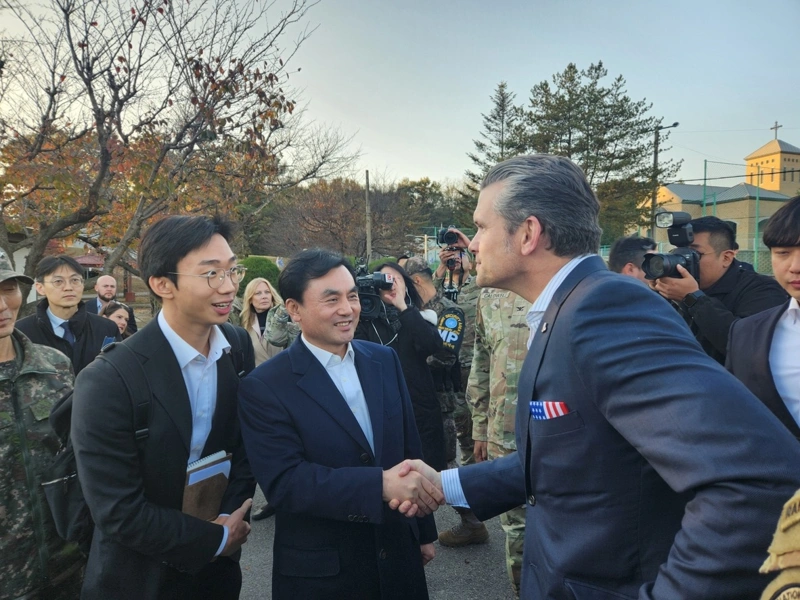Defense chiefs of S. Korea, U.S. visit DMZ amid efforts to resume N.K. diplomacy
South Korean Defense Minister Ahn Gyu-back and U.S. Defense Secretary Pete Hegseth visited the Demilitarized Zone (DMZ) separating the two Koreas on Monday, as the allies seek to resume diplomacy with North Korea while ensuring a robust combined defense posture, Yonhap reports.

The defense chiefs visited Observation Post Ouellette, the U.N. Command's military facility close to the Military Demarcation Line, and the Joint Security Area inside the DMZ, marking the first joint visit to the buffer zone by the two countries' defense chiefs since October 2017.
The 250-kilometer-long, four-km-wide DMZ is a buffer zone between the two Koreas, which remain technically at war as the 1950-53 Korean War ended with an armistice, not a peace treaty.
It remains unknown if Hegseth had a message for North Korea at the DMZ. Observers said that the secretary might have a message of peace on the divided Korean Peninsula rather than of warning against Pyongyang given that Seoul and Washington seek to create an opening to kick-start diplomacy with the recalcitrant regime.
The visit to the DMZ came about an hour after Hegseth landed at Osan Air Base in Pyeongtaek, some 65 km south of Seoul, kicking off his two-day visit to Korea.
On Tuesday, Ahn and Hegseth will attend the allies' annual defense talks, called the Security Consultative Meeting (SCM).
During the SCM, the two sides are expected to discuss an array of key alliance issues, including the transfer of wartime operational control (OPCON) from Washington to Seoul, South Korea's defense spending and the alliance's combined defense posture, to name a few.
The issue of the OPCON transition is likely to figure prominently at the SCM as South Korean President Lee Jae Myung's administration seeks to retake wartime OPCON within its five-year term that ends in 2030.
Seoul's push for the transfer comes as the South Korean military has stepped up efforts to advance its independent defense capabilities, with Washington calling on Seoul to undertake greater security responsibilities.
The two countries have been working on the conditions-based OPCON transition. South Korea handed over operational control over its troops during the 1950-53 Korean War. It retook peacetime OPCON in 1994, but wartime OPCON still remains in U.S. hands.
Also on Tuesday, Hegseth plans to meet with South Korean President Lee Jae Myung, and meet U.S. troops at Camp Humphreys in Pyeongtaek, the largest U.S. overseas military installation, to thank them and their families.
Korea is the last leg of Hegseth's Asia swing that included stops in Hawaii, Japan, Malaysia and Vietnam.
As reported previously, South Korea's fifth homegrown military spy satellite, launched from a U.S. space base in Florida on a SpaceX Falcon 9 rocket, successfully entered orbit.
